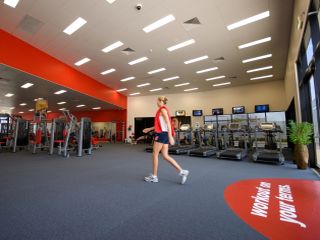
 There are plenty of challenges in running a fitness business but joining a strong franchise chain has real benefits in today’s highly competitive arena. Competition is based on price, location, and quality of facilities and services, according to IbisWorld, and one of the ways gyms are gaining competitive advantage is by targeting particular niche markets.
There are plenty of challenges in running a fitness business but joining a strong franchise chain has real benefits in today’s highly competitive arena. Competition is based on price, location, and quality of facilities and services, according to IbisWorld, and one of the ways gyms are gaining competitive advantage is by targeting particular niche markets.As the fitness sector gets personal, Jetts Fitness CEO Martin Oliver says “We can see what’s happening in the UK and the US where there is a move into a boutique format. Gym members are very instructor driven, and they might go to a gym for convenience but then attend two yoga sessions at a yoga studio.
“They might have spent $60 at a full-service gym, but are now sending $100 across a selection of activities. They are going to specialists. Spend is certainly shifting, and it’s all coming out of the big box clubs.”
In Australia there are about 750 24/7 clubs, each has about 1000 members and this has created a lift in demand, he says.
“Brisbane is the most competitive market in the world for 24/7 gyms, there are five or six different operators, that’s about one gym for every 25,000 people, and they are all reasonably successful.
“We’re careful about our site selection. We ensure the franchisee in the business is capable of running it, we pick sites where they can make money. It’s a longterm approach, not a short term sale.”
For Jetts to operate successfully gyms need a catchment of a minimum 20,000 people.
“We see the population growth and land releases, and there are 200 to 300 more sites in Australia. We’ve reached a slowdown and you have to be careful about sites.
“We’re not that aggressive, we want to be the best. We plan to open between 20 and 30 stores a year, for the next three to four years. After that it will be more opportunistic. There are 100 sites left in the market for us, a reasonable chunk in Sydney.”
How to grow the business
The core income comes from membership fees. So how in a slowing market does a franchisee keep growing the business?
“We’re trying to deploy strategies to keep people longer,” says Oliver. “The future of our brand and model is about engagement.”
This can be hard in a business model with typically just a manager and maybe assistant manager as the regular staff. Jetts recently linked with Velocity and within the first month there have been about 4000 memberships linked to the rewards program and earning points, half of these new members.
The club business also implemented a membership promoter score to gauge customer feedback.
“We listen to the members, this is rich information. We launched it in May and have had 30,000 comments. We’ve started to formulate a strategy about what the model looks like.”
Membership retention reduces the investment in marketing to bring in new members.
The club chain is now overseas too, with its European launch last year in the outskirts of The Hague, in Holland. The country has a 20m population and the dynamics are right for the gym brand to introduce value for money, says Oliver. He predicts this to be a 500 to 600 club market and will master franchise the opportunity. Another master will be appointed for the introduction of the UK business.
Spain, Germany and Austria are also in the line-up for Jetts’ expansion.
“You have got to have a credible model and credible partners. You have to spend a lot of time working the market.”

